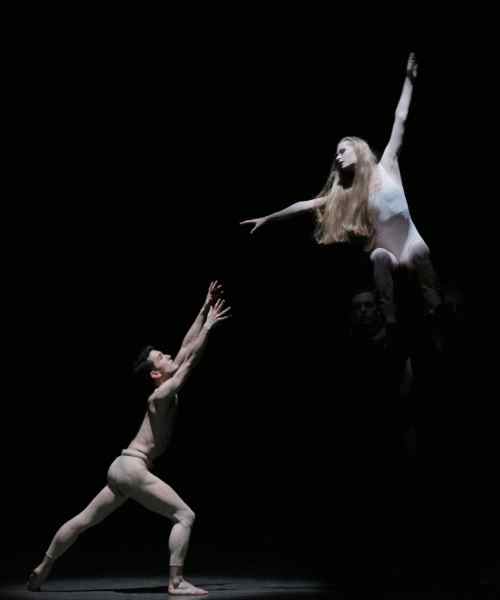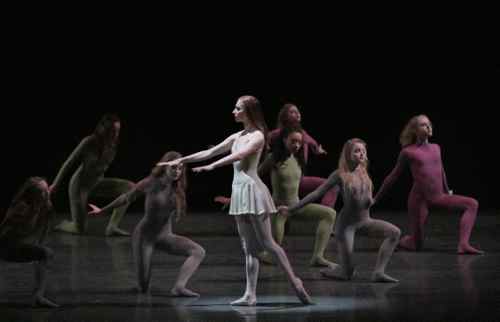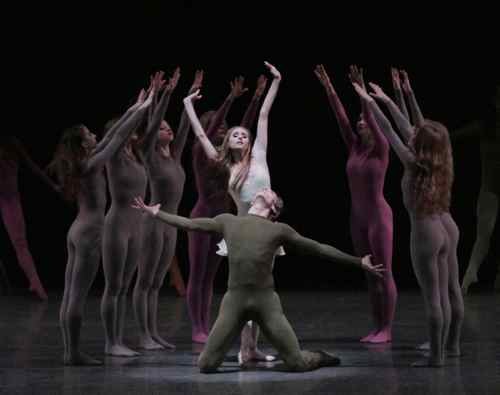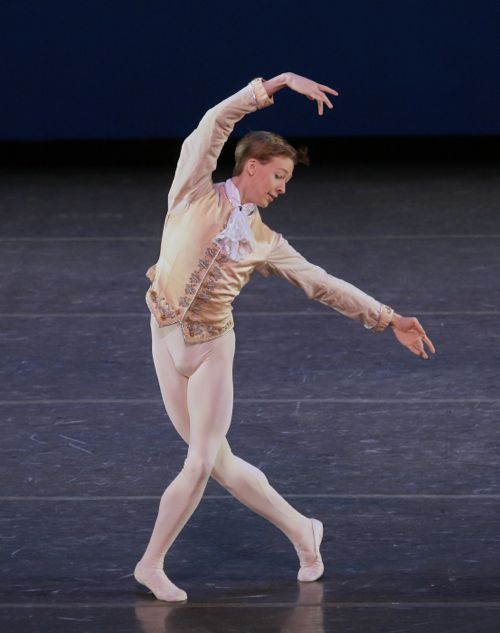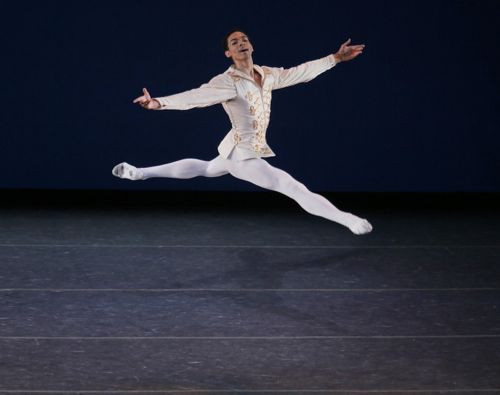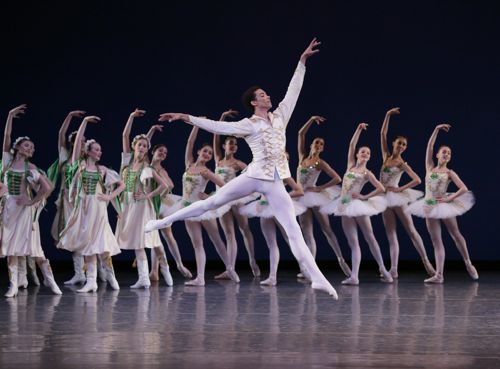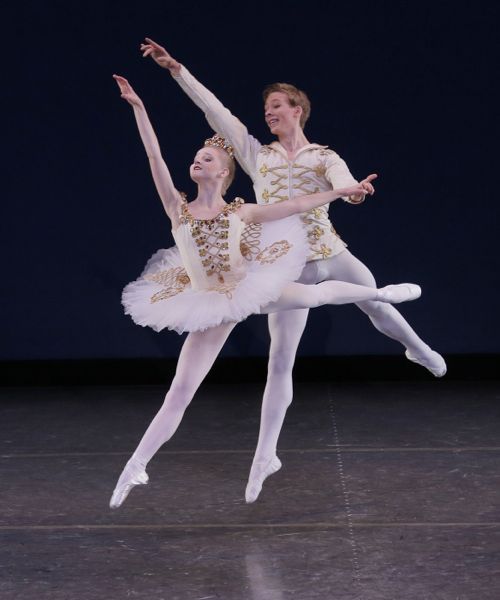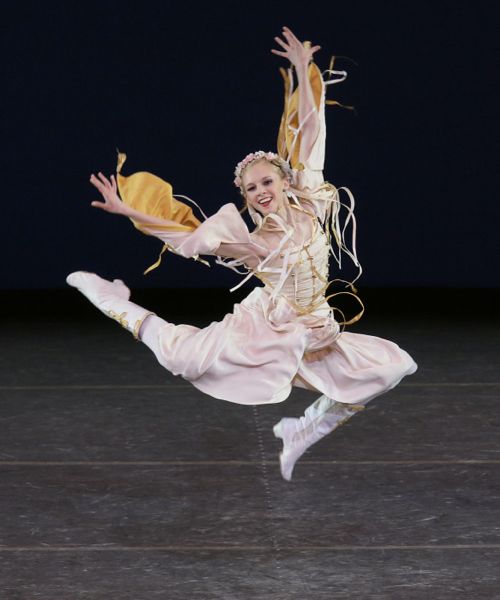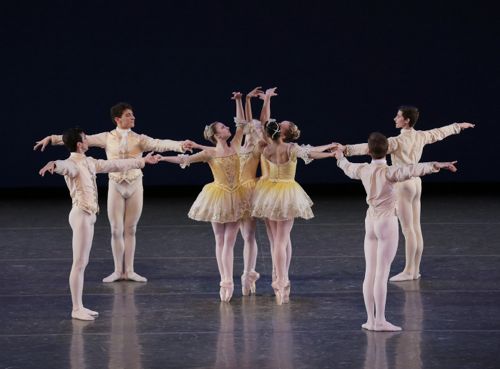To call the School of American Ballet “selective” is an amusing understatement. It’s the training ground in the U.S. for potential professional classical dancers (who must, of course, begin on the path as children) and the alma mater of a majority of the performers in the New York City Ballet.
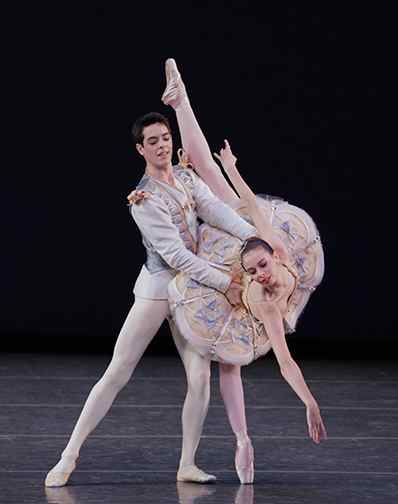 School of American Ballet Workshop Performances: Jordan Miller and Alejandro Ocasio in George Balanchine’s Divertimento No. 15
School of American Ballet Workshop Performances: Jordan Miller and Alejandro Ocasio in George Balanchine’s Divertimento No. 15
Photo: Paul Kolnik
The academy draws students who show basic potential for the trade to which they aspire in anatomy, musicality, focus, and quickness to respond to instruction. The younger children—whose size clearly differentiates them from the company members—often get to perform roles in ballets that require them. Balanchine wanted SAB’s pupils to have the kind of valuable stage experience he had had himself, as a boy at the school of the Mariinsky (now Kirov) Ballet. The sad but inevitable dark side of SAB is that year after year, in the course of the academy’s curriculum, the less-than-wonderful and the less-than-committed to ballet’s singularly challenging requirements are weeded out and more capable others, who began their dance life elsewhere, take their places.
Annually, as May segues into June, SAB shows the best of its senior students in three performances over two days, with shifting casts in the principal roles; the remarkable teenagers (as they have become) work wonders; and the public ogles, astonished. The event is called a Workshop, which is yet another understatement. I saw both matinee and evening performances on June 1.
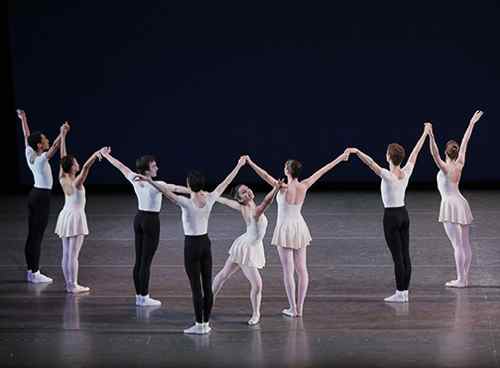 SAB Workshop Performances: The cast of Balanchine’s Le Tombeau de Couperin (with Alessandra D’Alessandro facing front)
SAB Workshop Performances: The cast of Balanchine’s Le Tombeau de Couperin (with Alessandra D’Alessandro facing front)
Photo: Paul Kolnik
The repertoire for this year’s Workshop comprised three Balanchine ballets—the exquisite Divertimento No. 15 (to Mozart), staged by Suki Schorer, which makes you feel you’ve died and gone to heaven; the inventive and elegant group work Le Tombeau de Couperin (to Ravel), staged by Rosemary Dunleavy and Arch Higgins, which starts out as a model of purity and ends with a hoe-down; and the Walpurgisnacht Ballet from Gounod’s Faust, staged by Susan Pilarre—a showpiece in which a bevy of lovely young women, their hair unbound, let ‘er rip.
As usual, the stagers had been dancers with the company though not necessarily at the principal level since performing in a ballet and passing the choreography on to the rising generation require somewhat different gifts. There were plenty of excellent dancers in action, but for me no single performers who were clearly destined for glory. Instead, let me name the soloists in both the matinee and evening presentations of Divert, as the dancers nickname it, the most important and challenging work on the program: Daniela Aldrich, Laine Habony, Jordan Miller, Clara Ruf-Maldonado, Mimi Staker, Patrick Frenette, Zachary Guthier, and Alejandro Ocasio.
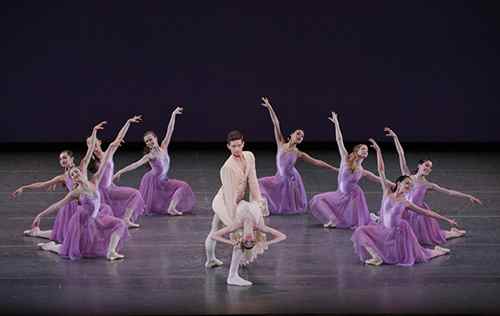 SAB Workshop Performances: Clara Miller, Lorris Eichinger, and ensemble in Balanchine’s Walpurgisnacht Ballet from Gounod’s Faust
SAB Workshop Performances: Clara Miller, Lorris Eichinger, and ensemble in Balanchine’s Walpurgisnacht Ballet from Gounod’s Faust
Photo: Paul Kolnik
The stagings of all three ballets on display were well-nigh immaculate because Workshop enjoys an extended rehearsal period, which the parent company forgoes in favor of a huge rep. (Its next season is using as its slogan “33 Ballets in 3 Weeks.”) The miracle is that the Workshop productions do not lose their youthful freshness because of the lengthy preparation period with its detailed coaching. Instead, they give you a glimpse, hearteningly promising to repeat a similar event every year, of the very fortunate mating of grueling work, hope, and incandescent desire.
© 2013 Tobi Tobias




